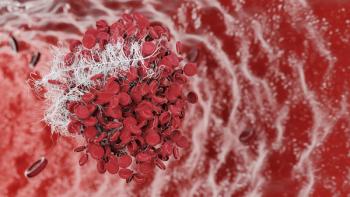
ISOPP Releases Global Position Statement on Oncology Biosimilar Use
The International Society of Oncology Pharmacy Practitioners global position on oncology biosimilar use covers regulation and evaluation, implementation, education, and monitoring.
With the recent expiration of several patents for originator products in oncology and more on the horizon, the biosimilar market is poised for future growth in cancer care. Oncology pharmacists are well positioned to serve as resources for biosimilar use in this setting, whether that be through educating patients and prescribers or helping to lead biosimilar implementation in their institutions.
The International Society of Oncology Pharmacy Practitioners (ISOPP), which met recently for its 18th international symposium on oncology pharmacy practice, issued a new global position statement on the use of oncology biosimilars. The statement covers the regulation and evaluation of biosimilars, practice issues around implementation, education, and the requirement for ongoing pharmacovigilance and outcome monitoring.
Of note, the position statement includes ISOPP’s stance on biosimilar interchangeability, stating that biosimilars are not to be considered interchangeable with an originator product and should not be automatically substituted. Currently, the FDA is the only regulator with the facility to assign an interchangeable designation to a biosimilar. Even so, the agency has not deemed any biosimilar interchangeable to date.
“Given the possible risks associated with transitioning between biotherapeutic products and the absence of an interchangeability designation, automatic substitution with biosimilars is discouraged,” the position states.
However, it does indicate that switching from reference drugs from biosimilars within institutions or for individual patients is acceptable and encouraged.
Furthermore, ISOPP explains that efforts such as formulary addition or the development of treatment protocols to select an institutionally-preferred agent and to switch from an originator to a biosimilar product are strongly encouraged as methods to facilitate biosimilar use.
The position also indicates that ISOPP does not support or recommend the use of biomimics or non-comparable biotherapeutics in practice, reiterating that a biosimilar is not considered therapeutically equivalent to other biosimilars of the same originator.
In addition, the position suggests partial implementation within an institution for certain patient populations, especially when there are financial barriers or clinical issues preventing full implementation.
“When there is a clinical issue making a clear choice uncertain, partial implementation may be necessary for patient/clinician confidence until more information on a specific product or disease state becomes available,” ISOPP wrote in the statement.
Adherence to best practice guidelines on the storage and labeling of biosimilar products can also help reduce the risk of selection error. ISOPP suggests that where no guidelines exist, to use the brand name or US 4-letter biosimilar suffix in patients’ medical records. When keeping both biosimilar and originator products or multiple biosimilar products in stock, all similarly-named products should be physically segregated and clearly labeled, and the adoption of barcode scanning technology should be considered, according to the position.
With regard to safety, the position indicated that although differences between originator and biosimilar product formulation do not alter clinical efficacy, inactive components of biosimilars may impact tolerability, sensitivity, or immunogenicity. For this reason, ongoing pharmacovigilance and long-term safety data are needed for continuous monitoring.
This ongoing monitoring is essential also in part due to its impact on biosimilar acceptance. Public acceptance of biosimilar use is contingent on patient education on the clinical similarities and differences between biosimilars and their originators. Although current evidence supports biosimilars’ efficacy and safety, collection of real-world data is imperative to contributing to growing confidence among patients and providers, according to ISOPP.
“Practicing pharmacists should contribute to the evidence through audits and research as well as documentation and reporting of any notable adverse events with biosimilar or originator products through the WHO and national regulatory bodies,” the position stated.
Reference
Bubalo J, Chan A, Cubilla M, et al. ISOPP Global Position on the Use of Biosimilars. International Society of Oncology Pharmacy Practitioners. October 4, 2019.
Newsletter
Stay informed on drug updates, treatment guidelines, and pharmacy practice trends—subscribe to Pharmacy Times for weekly clinical insights.










































































































































































































